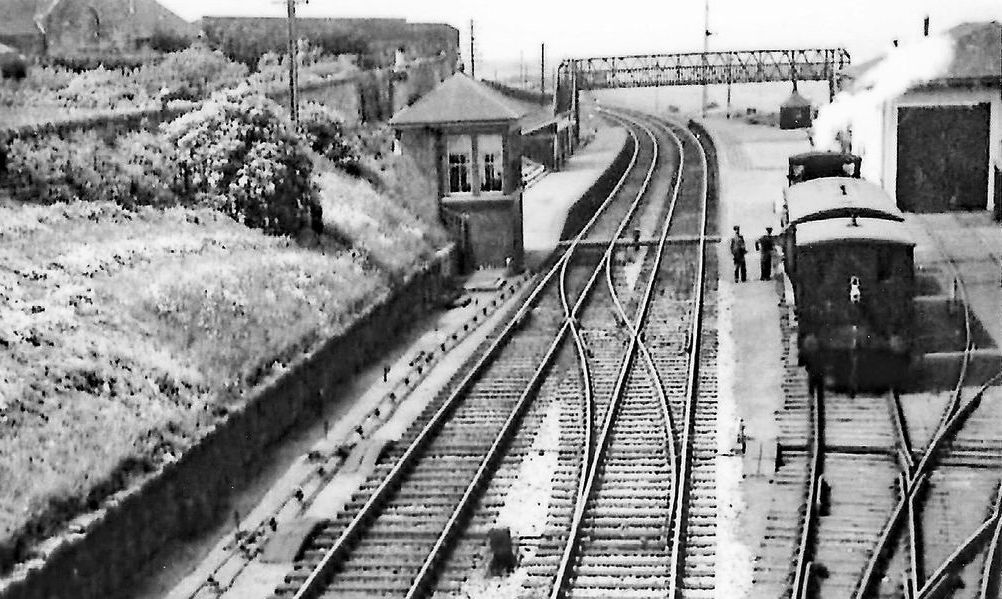August 2022
This month, we are going to look back at some of our local railway stations.

The photo above, from the DDHS archives, is of the former Innerwick station. This site tells us that the station opened in 1849 as part of the North British Railway and that “It was a two platform station. The main building was on the westbound platform”. There was also a goods yard and a siding and “a signal box at the end of the eastbound platform”. The station closed in 1951 and the signal box in 1967. What is very interesting is that Innerwick station was not actually in Innerwick! Jim Herring regularly cycles past the Station House in Crowhill but discovered that there was no Crowhill station. He contacted rail expert Tom Thorburn who explained: “Stations were often built some distance away from the village or town that they served… Railways initially were about handling goods rather than people as no one travelled back then to any degree, and in most cases no one had the wherewithal to enable them to travel”. Tom also added some interesting information about Dunbar, stating that the North British Railway brought the railway from Edinburgh to Dunbar “to transport the fish, even proposing to take the line from immediately south of the Station and down past the Hillside to the harbour”. This never happened and the railway went south to Berwick. There are photos of the old station house here. A few years ago, Pauline Smeed researched and wrote the text for an exhibition entitled “Steaming into Dunbar” and you can read the text of the exhibition here.

The next station is at Cockburnspath, locally known as Co’Path. The photo above, from DDHS archives, shows the two main lines, taking trains north and south, as well as a third line, with a steam goods train on it and two railwaymen attending to it. The station was built in 1846 and closed in 1951. There are a range of photos on the Railscot site, which also gives us more information about the station. The site states “This was a two platform station about a third of a mile north of the village”. As with Innerwick, the station was outside the village itself. There was a single storey main building with waiting rooms which were “in timber”. There was also a mail apparatus at Co’Path – as there was just outside Dunbar station. The mail bags would be hung on the iron structure and as the train passed – at speed – a grabber on the train would snatch the bags, which would then be taken into the train by a guard. There is an excellent video of a mail apparatus – including a slow-motion replay – on YouTube here.
North British Railway map
The map above, from this site – best enlarged – shows the complete route of the North British Railway. The site notes that “The line originally ran from North Bridge station (where it did not at first connect to any other lines) to Berwick station (where it also did not connect to other lines as the Tweed had not been bridged). Along the course of its route, it had a branch to Haddington and connections to the Edinburgh and Dalkeith railway. This then was a period of great expansion for the railways but they were built by separate companies and it was not until later that they all joined as one national railway network. As you can see, there were stations at multiple points along the route, including Haddington (good photos), East Fortune (good photos) and East Linton (good photos) where a new station is being built. So East Lothian has a fascinating railway history, with Dunbar station one of the key links on the line from Edinburgh to Berwick.


You must be logged in to post a comment.